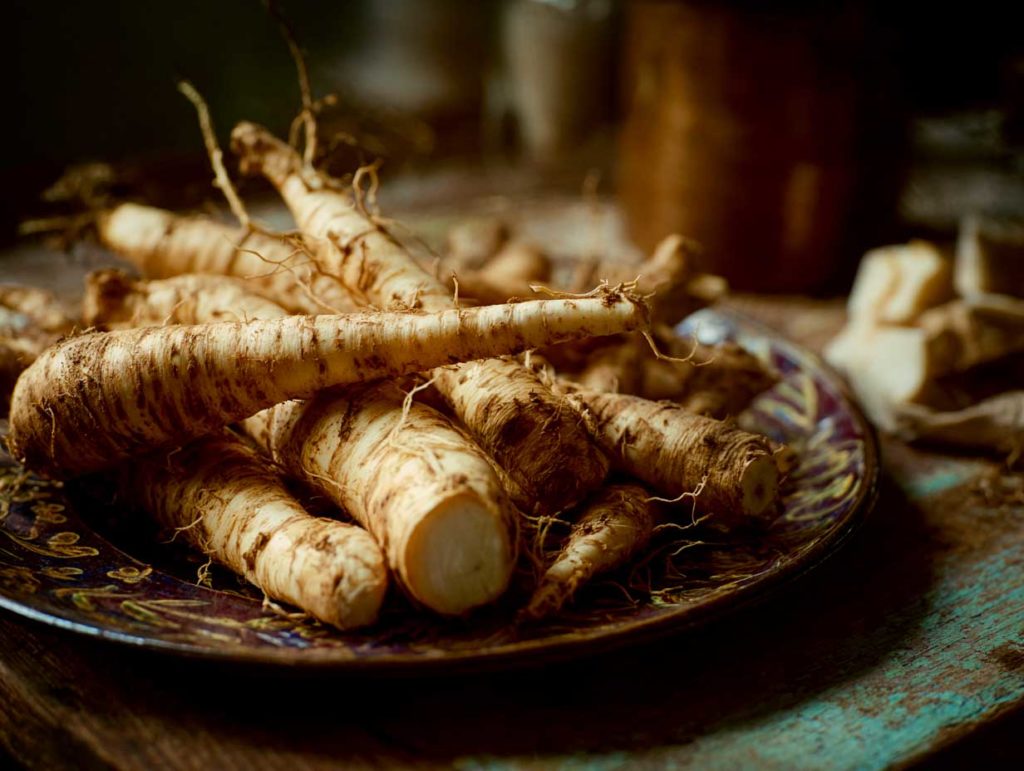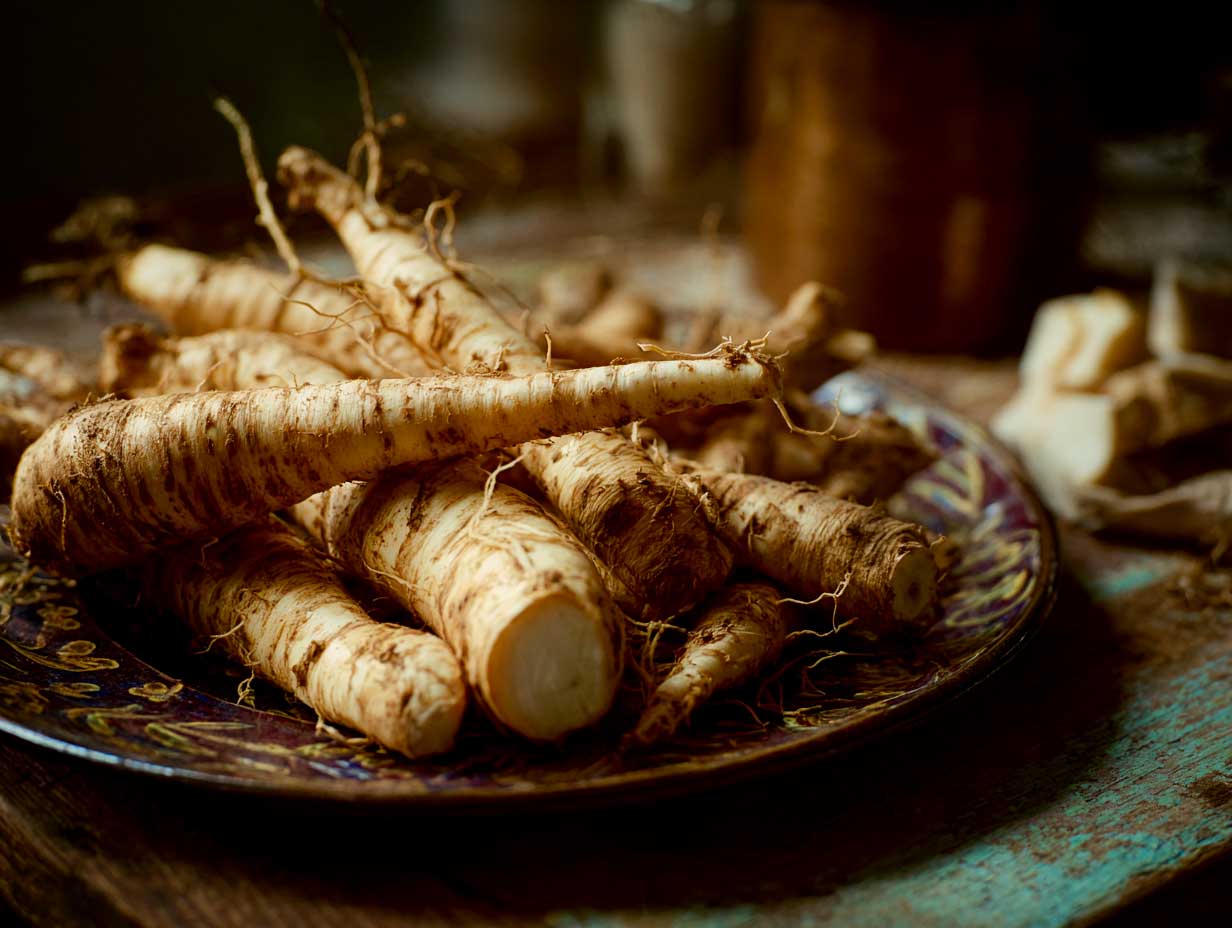Horseradish is not a staple in France, but plays a role in regional and classic dishes. Explore how it fits into French cuisine.
Understanding Horseradish’s Role in French Cuisine
A Root with Regional Importance
Horseradish, known in French as raifort, is not a central element of French cuisine, but it plays a meaningful role in regional cooking and some traditional French meals. Its use is mostly localised, especially in Alsace, parts of Lorraine, and in Burgundy, where the root complements the regional climate and food habits.
Unlike in German or Eastern European cuisine where horseradish is a frequent condiment, in France, it appears less often and is typically used with restraint. Its presence is linked to the local traditions and preservation techniques of cooler, rural areas.
Horseradish is cultivated in limited quantities. France produces around 800 tonnes annually, mainly in Grand Est. The root is harvested in autumn and used fresh, grated, or preserved in vinegar. The taste is sharp, mustard-like, and disappears quickly when cooked. This volatility requires precise handling in French kitchens.
Regional Dishes and Traditional Uses
Alsace and the Germanic Influence
Alsace is the most important region for horseradish in food in France. Due to its border history and shared culture with Germany, horseradish has remained a local staple in certain homes and restaurant menus. It is commonly paired with cold cuts, boiled meats, and freshwater fish, especially truite au raifort (trout with horseradish).
The typical preparation in Alsace involves mixing grated horseradish with crème fraîche or vinegar, depending on the dish. This mix is served cold, often as a condiment. Unlike mustard, horseradish has a shorter aromatic profile. For this reason, it is added just before service, or used raw, to preserve its impact.
In Strasbourg or Colmar, artisanal producers offer jars of preserved horseradish for about €3.50 (around £3 / \$3.80) per 120 g (4.2 oz) jar. These are often sold at markets or through cooperatives focused on regional identity and farm products.
Outside Alsace, Burgundy uses horseradish with jambon persillé (parsleyed ham) or as an alternative to Dijon mustard in some family recipes. It is not common in restaurants but remains a familiar home flavour.
The positive aspect of horseradish in these areas is its link to local agriculture and preservation of traditional condiments. However, its limited visibility in broader French cuisine means that many French cooks, even professionals, do not consider it part of their ingredient base.

French Horseradish in Modern Professional Cooking
Rare but Technically Interesting
In modern gastronomy, horseradish is used sparingly. Chefs may turn to it for contrast, especially in tasting menus where a small amount of heat is needed. In this context, horseradish is not used in its grated form, but often infused into creams, gelées, or foams, to deliver subtle pungency.
Restaurants in Paris, such as Le Chateaubriand or Septime, have occasionally included horseradish in sauces or emulsions paired with raw fish, scallops, or beetroot. These dishes are not traditional, but rather French reinterpretations of Nordic or Anglo-Saxon ideas, where horseradish is more widely used.
From a technical point of view, horseradish’s flavour compounds—mainly allyl isothiocyanate—break down when exposed to heat. French chefs who use the ingredient must therefore grate it fresh or emulsify it cold.
This process requires timing, precision, and knowledge of ingredient interaction. As such, horseradish offers opportunities for experimentation in French cooking schools, but remains a minor ingredient in most professional kitchens.
It is neither highly prized nor dismissed—it occupies a neutral, specialised place in the kitchen.
Industrial and Domestic Consumption in France
A Low-Volume, Niche Market
In supermarkets across France, horseradish is found near mustards and condiments, but the availability is inconsistent. Common brands like Alélor, based in Alsace, supply jars to major chains such as Intermarché and Leclerc, but mostly in eastern departments.
The average retail price is €1.80 to €2.50 (around £1.50–2.20 / \$2–2.70) for 100–150 g (3.5–5.3 oz), depending on whether it is pure or blended with cream. Consumption remains low, with estimates below 100 grams per person per year in France.
In households that use it, horseradish is often mixed with grated apple, lemon juice, or vinegar, and served with sausages, smoked pork, or matelote de poisson (fish stew). This contrasts with urban French cooking, which tends to prioritise herbs, butter, or wine-based reductions.
The negative side of horseradish in domestic French use is its instability. Once grated, it loses potency in a few hours. This makes it impractical for large meals or casual cooking. It also limits its role in food preservation or batch preparation.
Horseradish and French Culinary Identity
Between Local Memory and Culinary Margins
While horseradish exists in French cuisine, it remains marginal in national narratives. It does not appear in major culinary reference books such as Larousse Gastronomique with any prominence. In contrast, mustard, especially Dijon, occupies a far greater space.
French culinary identity is tied to regional ingredients, and horseradish continues to survive thanks to cultural memory, especially in Alsace. In cookbooks focusing on Alsatian food, it still appears in recipes with boiled meats or sausages.
However, outside these regional traditions, horseradish is not part of the typical French meal. It is not associated with formal meals, holidays, or school canteens. Its usage today reflects agricultural history, seasonal cuisine, and cross-border culinary exchange.
For those looking to cook in France or explore French condiments, horseradish offers contrast and sharpness in an otherwise butter-forward cuisine. But it must be sourced fresh, handled with care, and used with understanding of its short aromatic life.
Cook in France is your gateway to French cuisine and gastronomy in France. Get in touch for your next cooking workshop.
